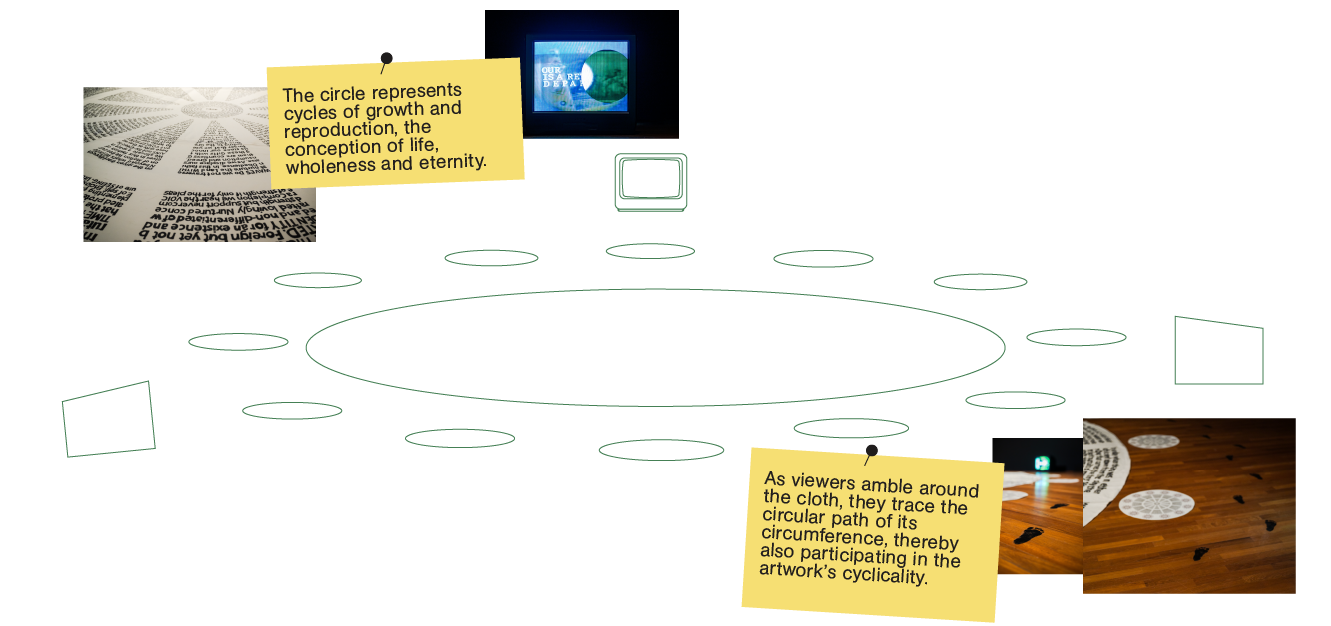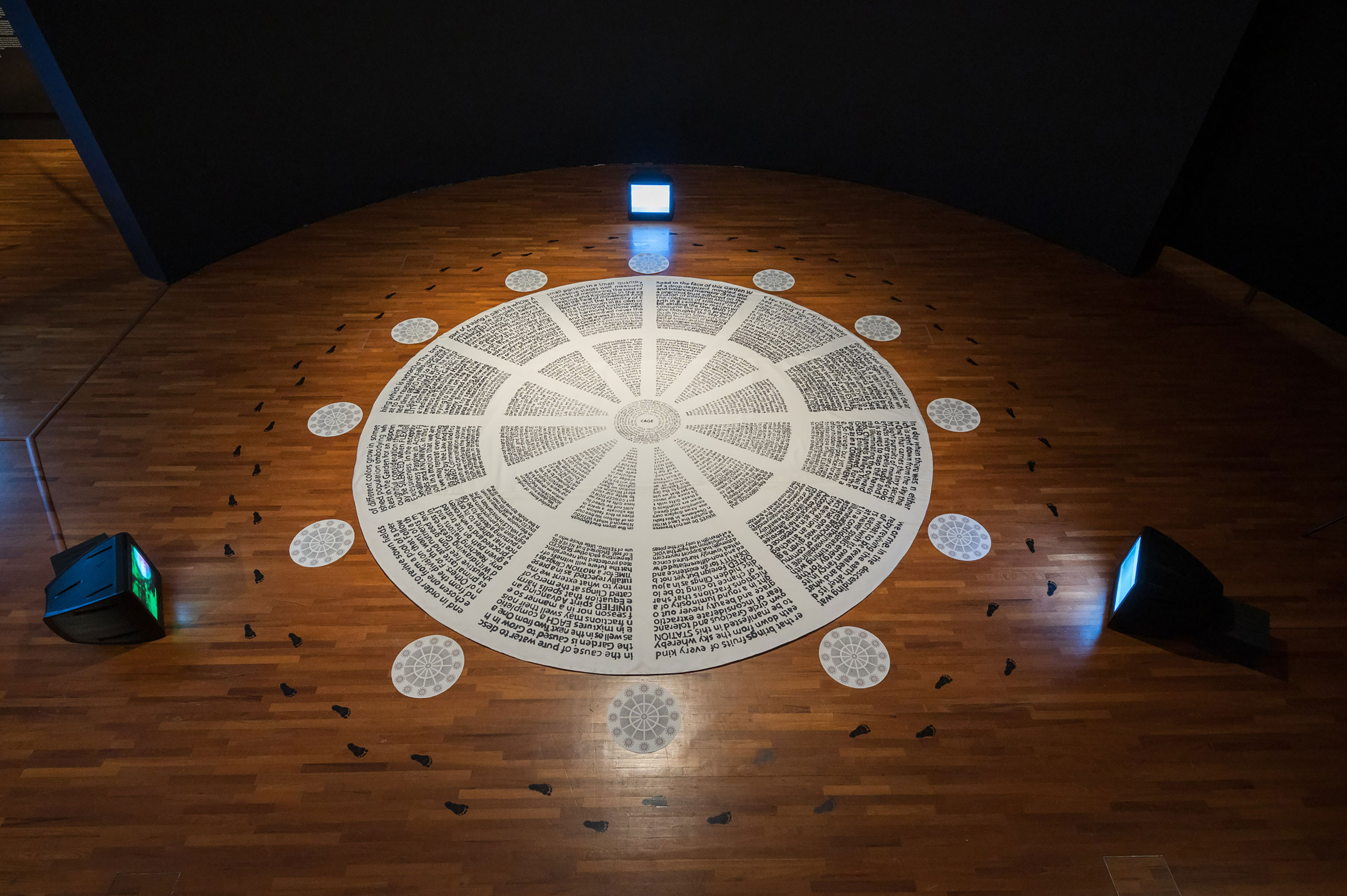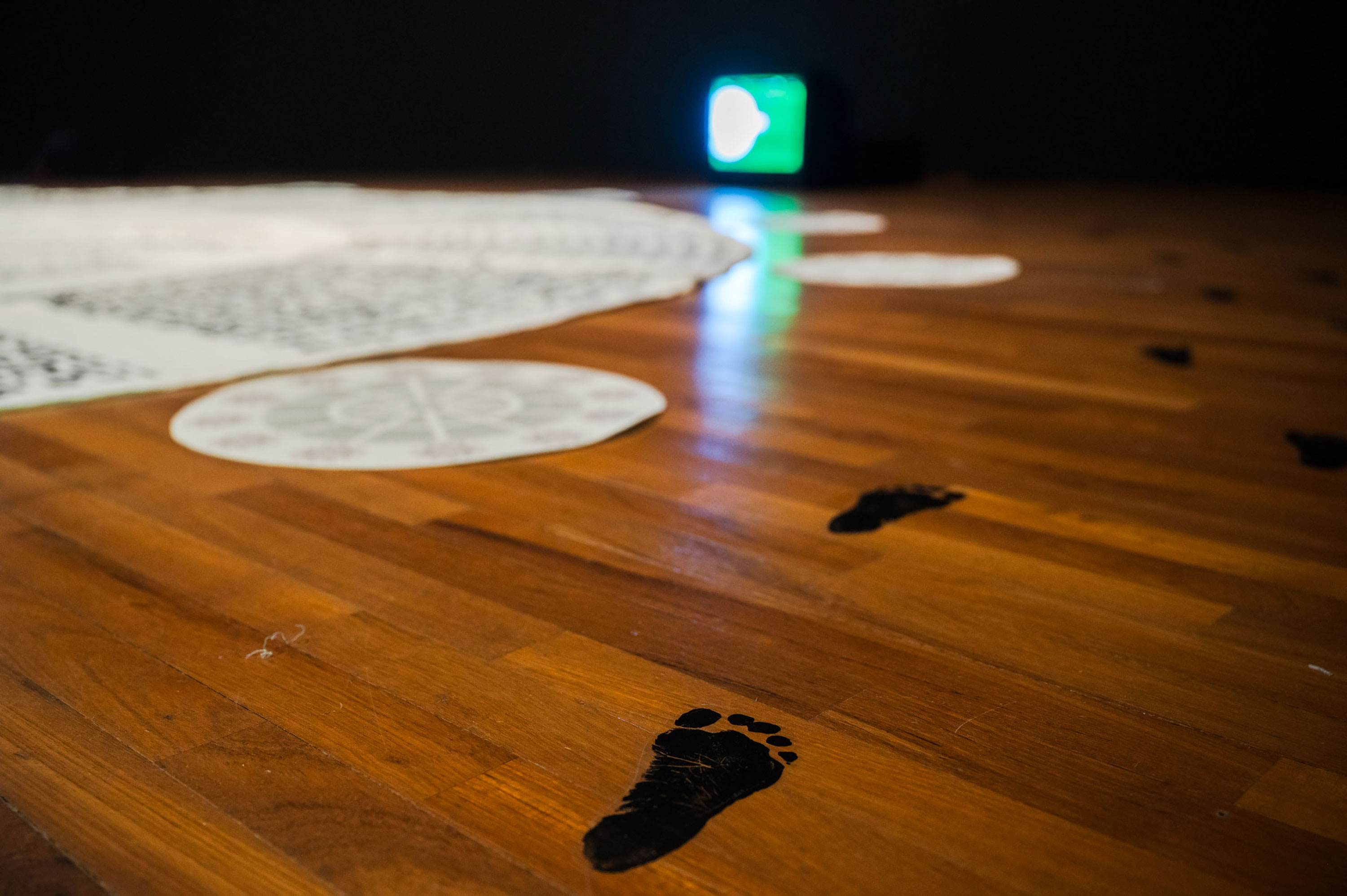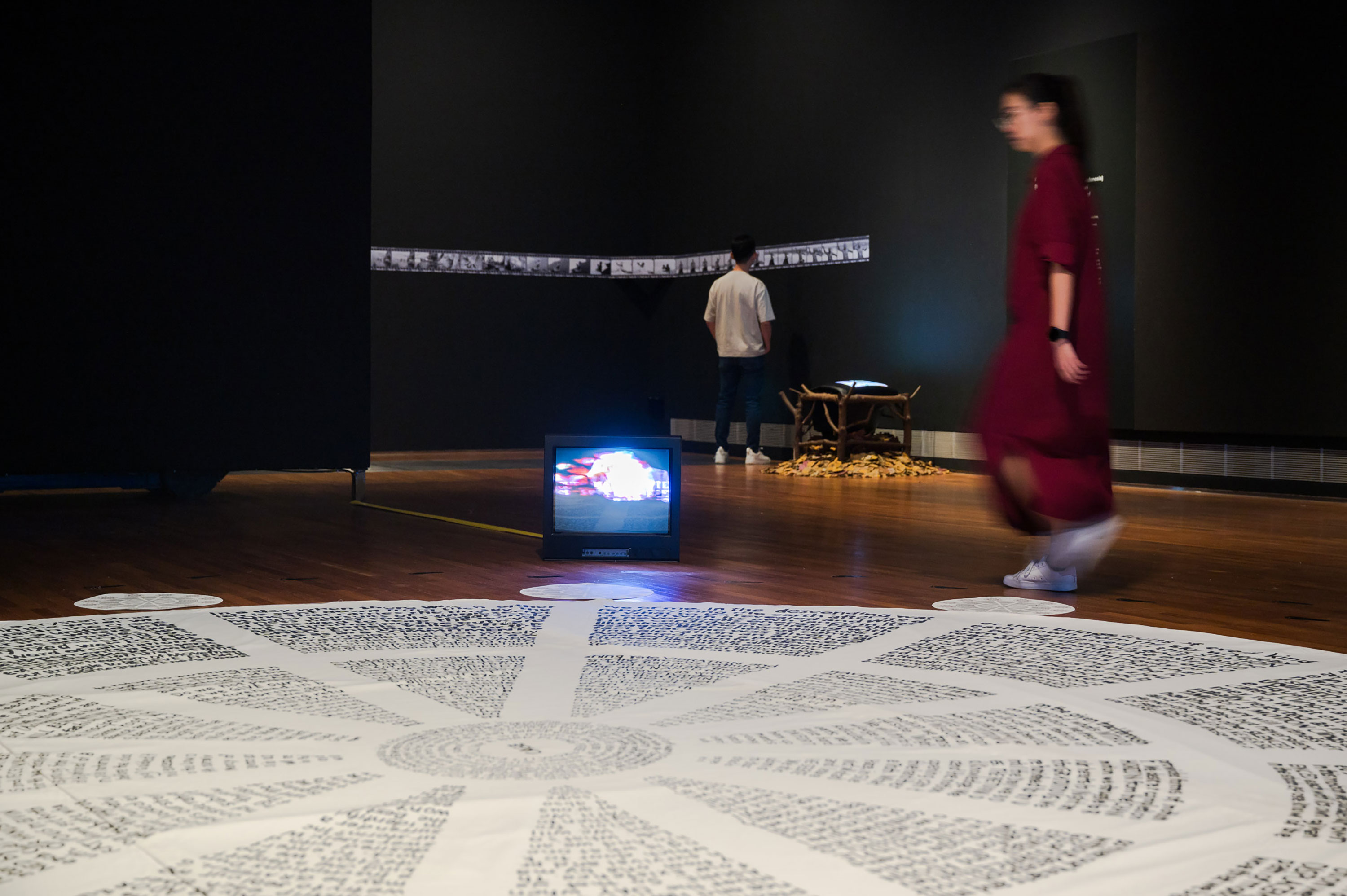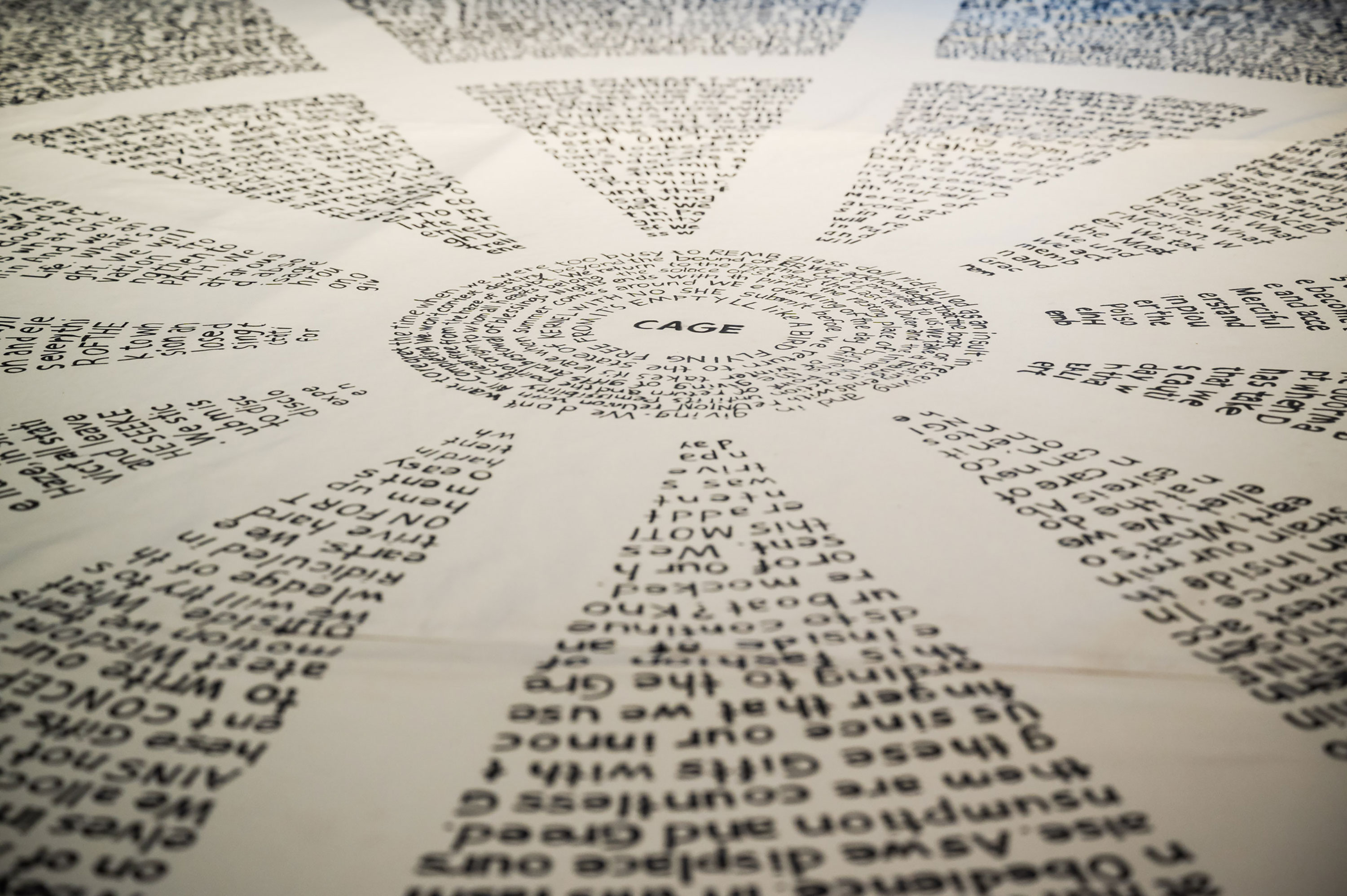
Created as Hasnul Saidon’s thesis for his master’s in electronic art at Rensselaer Polytechnic Institute, In the Precious Garden made its Southeast Asian premiere in the exhibition See Me, See You.

Hasnul Saidon. In the Precious Garden. 1993. Installation view, Rensselaer Polytechnic Institute, Troy, New York, USA, 1993. Image courtesy of the artist. © Hasnul Saidon
About the Artwork
In the Precious Garden
1993, remade 2023, Ink on cotton fabric, digital print on canvas, digital print on clear vinyl
sticker, three cathode-ray tube televisions, video
3 videos: each 4:3 aspect ratio, colour and sound (stereo), 59 min 57 sec each
Collection of the artist. Image courtesy of the artist Ⓒ Hasnul Saidon
Hasnul was part of the New Media Movement alongside peers like N. Rajah and has always had a profound engagement with the conceptual possibilities of video art. This artwork emerges from Hasnul’s personal narrative, particularly his experiences in the United States (USA), where he juggled his studies and artistic pursuits with his family responsibilities.
In the Precious Garden is not only a reflection of his artistic journey but also an exploration of the cycles of life, a theme inspired by the birth of his daughter.
Central to this work is the motif of the circle, which symbolises the conception of life and the cyclical nature of the universe. This theme manifests in elements of the installation, most notably in a cloth that serves as the piece’s focal point. On this cloth, Hasnul inscribes a text-poem, drawing from the wisdom of 13th-century Sufi mystic Rumi and 11th-century philosopher Abdul Qadir Jilani, as well as scientific insights into fetal development. The inscription invites visitors to engage with the artwork from any point, allowing them to read the text as they walk around the cloth. The visitors participate in the artwork’s inherent cyclicality, tracing its circumference.


Hasnul Saidon. In the Precious Garden. 1993. Installation view, Rensselaer Polytechnic Institute, Troy, New York, USA, 1993. Image courtesy of the artist. © Hasnul Saidon
Hasnul offers a commentary on life’s cyclical nature, the interplay between the metaphysical and the physical and the deep connection between the artist’s personal experiences and universal themes.
The installation features three television screens, each displaying a single-channel video. They are compilations of images including tree branches and abstract forms, overlaid with text. The videos are set to loop at different intervals: one at five minutes per revolution, another at 25 seconds per revolution, and the third at a different interval. They enact a cyclical, infinite pattern, and highlight Hasnul’s fractal treatment of time. This approach is a nod to the natural proportions found in nature.
Within them, two smaller circles moving at different speeds suggest spheres orbiting through the three screens, adding a metaphysical dimension to the work. This element reinforces the themes of cycles and continuity, resonating with the circular motif that underpins Hasnul’s installation. Through this work, Hasnul offers a commentary on life’s cyclical nature, the interplay between the metaphysical and the physical and the deep connection between the artist’s personal experiences and universal themes.
About the Artist
Hasnul Saidon (b. 1965, Malaysia) explores media, information technology and their impact of cultural identity through a range of mediums including video, painting and mixed media installation. Hasnul graduated from the Art and Design Department of the MARA Institute of Technology, Malaysia and the Southern Illinois University, US and has an MA in Electronic Art from the Rensselaer Polytechinic Institute, US. Currently, He is Associate Professor of Electronic and New Media Art at University Sains Malaysia (USM) and Director of the Muzium & Galeri Tuanku Fauziah (MGTF), USM.
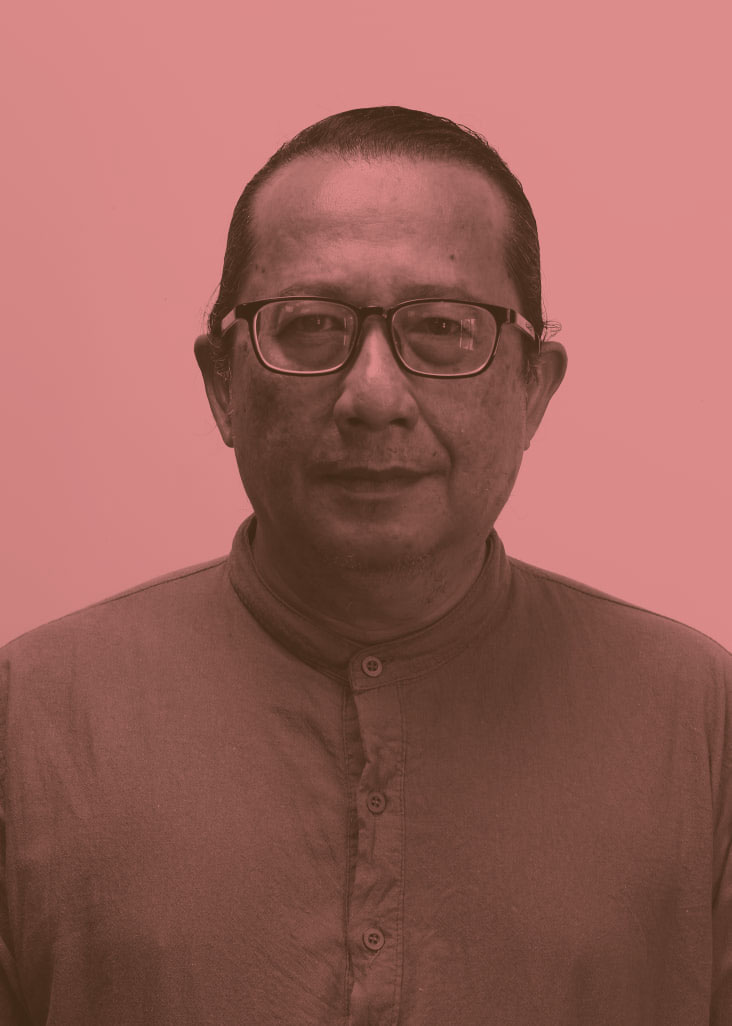
Image courtesy of Hasnul Saidon
Installation View
Discover More Details
Hasnul’s artwork prompts viewers to perform cyclicality in many ways, with movement cues on the floor and video imagery that draws the gaze from screen to screen.
